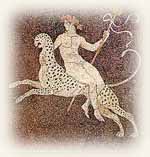The Grapevine Art & Soul Salon
Views and Reviews: Anne Lovett

A review of Susan Gilbert Harvey's POSTMARKS: the summers of '98
This memoir, Susan Harvey’s second book, follows her successful first book, Tea with Sister Anna: a Paris Journal, in which she tracked her great-aunt’s footsteps through Paris one hundred years after Anna McNulty Lester visited and studied there, shortly before the young woman’s promising artistic life was tragically cut short by tuberculosis. (Perhaps Woody Allen read her book and got inspired to make his film Midnight in Paris.)
Susan calls Postmarks a “reflective spiral in time.” This refers to the structure of the book, which turns from Susan’s present to her childhood, with episodes of family history from the time of her grandmother, then journeys through Susan’s life back to the present time. The story begins in 2008, with Susan’s recording of family history and a social history of Rome, Georgia—featuring some of the town’s eccentric women she knew growing up, such as Mrs. “Toot-toot” Kuttner, who dyed her hair bright orange and who never went into a store, but tooted the horn of her baby-blue Cadillac to have things brought out to her—and then circles back to 1998, when Susan was turning her own book of life to a new chapter.
She was drawn to art from childhood, but found little encouragement from parents and college professors. For a "nice" Southern doctor’s daughter, becoming an artist just wasn’t done. (What was done was to marry well and take your place behind the teapot and on the committee). In the 1960s, one woman artist in town, after all, had frowzled sandy hair, gardened in her slip and pantyhose, and eventually lost her car keys to legal custodians.
Susan Harvey tried the time-honored Southern matron’s approach of study and taking classes, but at the age of forty-one, she said, “To hell with taking courses, I want to make ART.” She became a structural artist. She called herself “Junk Woman” because of the wall-size installations she built from found materials such as oxygen tanks, silver saltshakers, well pulleys and fire tongs.
Susan found success and recognition, at last free from the shackles of a "proper" Southern upbringing.There came a time, however, when sculpture as a career had given her all it could, and, facing life changes, she searched for some other means of satisfying her creative impulse. Finding a trove of letters from the past was better than finding a cache of gold: it produced Susan’s journey into writing Tea with Sister Anna.
More letters find a home in Postmarks, her second book. Susan began her new inner journey in the summer of 1998. One hundred years before, in 1898, her great-aunt Anna and her grandmother Edith had embarked on an energetic trek through Europe that began in Cologne, led them through Strasbourg, Geneva, and the Simplon Pass to Lake Como in Italy, then into Switzerland again, finishing the circuit in Nuremburg. From there Sister Edith boarded a train that took her back to Berlin and another year of musical studies. Sister Anna returned to Paris for three more months of art studio classes.
Susan travels alongside the sisters in spirit, trying to make her life in that summer of 1998 somehow correspond with what the sisters experienced. She makes diary entries describing her thoughts and longings to travel while life seemed to be forcing her to do mundane tasks. Her mother lies in a nursing home with dementia. Susan must dismantle and dispose of her collection of "junk" saved for art projects. She and her husband realize their formerly prized possessions, as well as their spacious house, are becoming a burden. Her daughter’s mountain retreat, which Susan loves, is put up for sale. She tries to decipher disturbing dreams.
When she reads her great-aunt’s letters and realizes Anna Lester wanted to continue her travels but didn’t, and probably died with money left in her travel fund, Susan vows to seize the day and get to Paris as soon as she can.
Postmarks is not only a fascinating look at bygone eras, but its subtext deals with how a woman finds an identity. In the “old days” a woman had no identity of her own—she was someone’s daughter, someone’s wife. A woman became a person in her own right only when she struggled to make a name for herself. For Sister Anna, it was by becoming an artist. For Mrs. Toot-toot and the Rome lady artist, it was finding their individuality through eccentricity. Perhaps that is one reason Susan became not only an artist, but an eccentric one—one who found her own way.

Go to Susan Harvey for more information on Susan, including how to purchase her books.
Copyright ©2011 Barbara Knott • All Rights Reserved